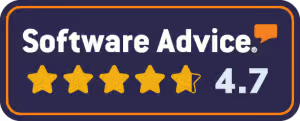Let me lay it out for you – we’re smack dab in the middle of a publishing revolution. Being a media vigilante or literary genius won’t cut it anymore. To make it in this game, you’ve got to have business smarts too. The playbook’s been rewritten on how we get our content out there, seen, and most importantly, making bank. It’s all about blending creativity with strategy and turning those killer ideas into cold, hard profit. If you’re not keeping up, well, you’re gonna get left behind.
Today, the movers and shakers of the publishing world are folks who don’t just have a deep love for the media, literature and creativity—they’ve got killer business savvy. They’re all about blending their artistic vision with some serious strategic thinking, leading to innovation and profitability.
All About the Bottom Line
Sure, content’s still king, but there’s a much bigger picture. It’s not just about pretty words; It’s all about that bottom line. We’re crunching numbers, assessing costs, and setting advertising rates that bring in the cash while trying to keep up with the evolving way people consume media.
“When I had the opportunity to buy Style Publishing Group, I didn’t have a specific type of company in mind that I wanted to purchase,” says Chris Johnson, former publisher and current media and publishing strategist. “I was mostly interested in having a smaller, community-based company where I could make a difference in people’s lives, but also provide for my family.”
Picture this: Chris buys the company, right? And suddenly, his phone’s blowing up with all these publishers wanting to jump on the magazine train. They’re all about being seen at the hottest events, snapping pics, and just soaking up that social scene. “And I will tell you, 99% of them had no clue about a business model,” said Chris. “I mean, how are you going to pay for printing? Printers like to be paid. The post office likes to be paid too. So many expenses go into producing a publication, and they hadn’t considered any of them.”
Make a Business Plan
When Chris started publishing his own magazine, he had been in the game for more than 20 years, climbing the corporate ladder with gigs in marketing, finance, and strategy. But even with all that know-how, he wasn’t too proud to admit when he needed a little extra help. That’s why he reached out to a business management consultant to make sure he had all his bases covered. “I spoke to my business coach and he helped me develop a really good financial model that allowed me to document every single type of expense associated with the business,” says Chris. “All the people, all the taxes, all the insurance, all the computers, printer, postage – every type of expense.”
Factor in Profit
As much as he wanted to make a difference in his community, Chris – like most people– also needed to make money for his family. So he made sure he factored in profit when looking at the bottom line. “I allocated that across literally every square inch of the magazine. There would be X number of pages dedicated to editorial and Y number of pages dedicated to ads … then I would know what the cost of all those inches were,” says Chris. “Then I would know what my ads had to cost in order to make sure my expenses were covered, and I could make the profit that I wanted to make. This made decisions on discounting ‘black and white.’”
Set Ad Rates
A lot of newbie publishers just wing it when it comes to setting ad rates. They’re all over the place, and they end up losing money. Then they go and switch up the rates on their advertisers like it’s no big deal, and guess what? Those advertisers are not happy campers. But with proper planning from the start, this can be avoided. “I’ve asked publishers, ‘How did you come up with your rates? How did you decide what your cost is for advertising?’” says Chris. “A lot of them just said, ‘That’s what we’ve always done.’ And if they needed more money to cover expenses, they would horse whip their salespeople to sell more.”
Avoiding this tactic drove Chris’ mindset. He wanted a sound operating business that had a predictable business model. He wanted to understand his costs and build a profitable rate card. “There are printer requirements regarding number of pages, advertisers who only want to buy one ad, some that want to buy 12 or more … and so you must look at historical data and project what your average contract would be and what your average contract discount will be. This will help you understand what your sales need to be. None of this is revolutionary, I just see it as running my business.”
Know How Your Audience Consumes Media
Running a business means staying on top of how people are consuming media and how the market’s shifting. And it’s not just about what readers want, but also what advertisers are after. If advertisers think they can get more bang for their buck with Google ads, why would they drop $1,500 on you? You’ve got to play both sides of the game. You’ve got to understand how people are soaking up media and how advertisers are dishing out their cash. You’re the middleman. You’re the bridge between the two worlds.
“You have to be flexible,” says Chris. “What was successful will not always be successful. What worked before may not work now. You must do a dance and evolve as the market evolves. Get the training and education. Staying stagnant won’t get you anywhere.”
Time to Hire Help
Now you’ve got your business plan locked in and you’re vibing with your audience, but let’s face it – you can’t do it all solo. It’s time to build your dream team. We’re talking about creating a squad where everyone brings something to the table. We’re not just looking for yes-men here; we need a real collaborative environment where ideas flow and strengths shine. Because, let’s be real, we’ve all got our strengths and weaknesses. It’s time to bring in the big guns and build something epic together.
“I always focused on hiring people that have similar values, sometimes purposely diverse from my own perspective because I wanted to produce the best product for readers and not all readers are like me,” says Chris. “I also would look for people that were strong enough to express their opinion and smart enough to articulate it. I would create an environment where they would be accepted, and they felt free to express those thoughts and feelings. This drives ownership in anything published.”
Figure Out the Facts
Once you’ve assembled your crew of rockstars, it’s time to figure out the nitty-gritty of payroll. Do you go all-in with full-time positions and benefits, or keep it flexible with everyone as a 1099 contractor?
Let’s break it down. As a boss, you’ve got to consider the facts – like payroll taxes. Did you know that as an employer, you’re responsible for withholding federal income tax, Social Security tax, and Medicare tax from your employees’ paychecks? And that’s not all – you’ve got to match those Social Security and Medicare taxes, too. It’s a lot to juggle, but hey, that’s why they call it business. Weigh your options, crunch the numbers, and make the call that’s best for your bottom line and your team.
It’s About Combining Creativity with Strategy.
The days of relying solely on creativity and journalistic skill to succeed in publishing are long gone. A strong business awareness and a well-thought-out business plan are essential to thriving in this industry. Those who embrace this holistic approach will undoubtedly be the frontrunners of tomorrow’s publishing world.







